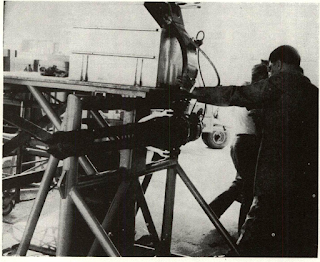Rapid fire inventions followed at a rapid pace. The
Russian General Gorloff was sent to Hartford to
Back in the Russian Empire the Gatling guns became important to the Czar’s artillery. The name “Gorloff” was all that the cyrillic-reading Russkies could
Dr. Gatling reaped the rewards of genius, business acumen, and hard work; an income exceeding $2,000,-
000 in the space of 30 years from his revolving barrel
When he had married, his wife received a slave as a
The big house in Hartford was a beloved retreat
His granddaughter, Peggy (Mrs. Albert Newcombe),
“Grandfather died in my arms when I was about 16,
Thus ended the inventor of the Gatling Gun; but not
3,000 shots per minute, and also acting as a brake
Russian General Gorloff was sent to Hartford to
Back in the Russian Empire the Gatling guns became important to the Czar’s artillery. The name “Gorloff” was all that the cyrillic-reading Russkies could
Dr. Gatling reaped the rewards of genius, business acumen, and hard work; an income exceeding $2,000,-
000 in the space of 30 years from his revolving barrel
When he had married, his wife received a slave as a
The big house in Hartford was a beloved retreat
His granddaughter, Peggy (Mrs. Albert Newcombe),
“Grandfather died in my arms when I was about 16,
Thus ended the inventor of the Gatling Gun; but not
3,000 shots per minute, and also acting as a brake

Comments
Post a Comment